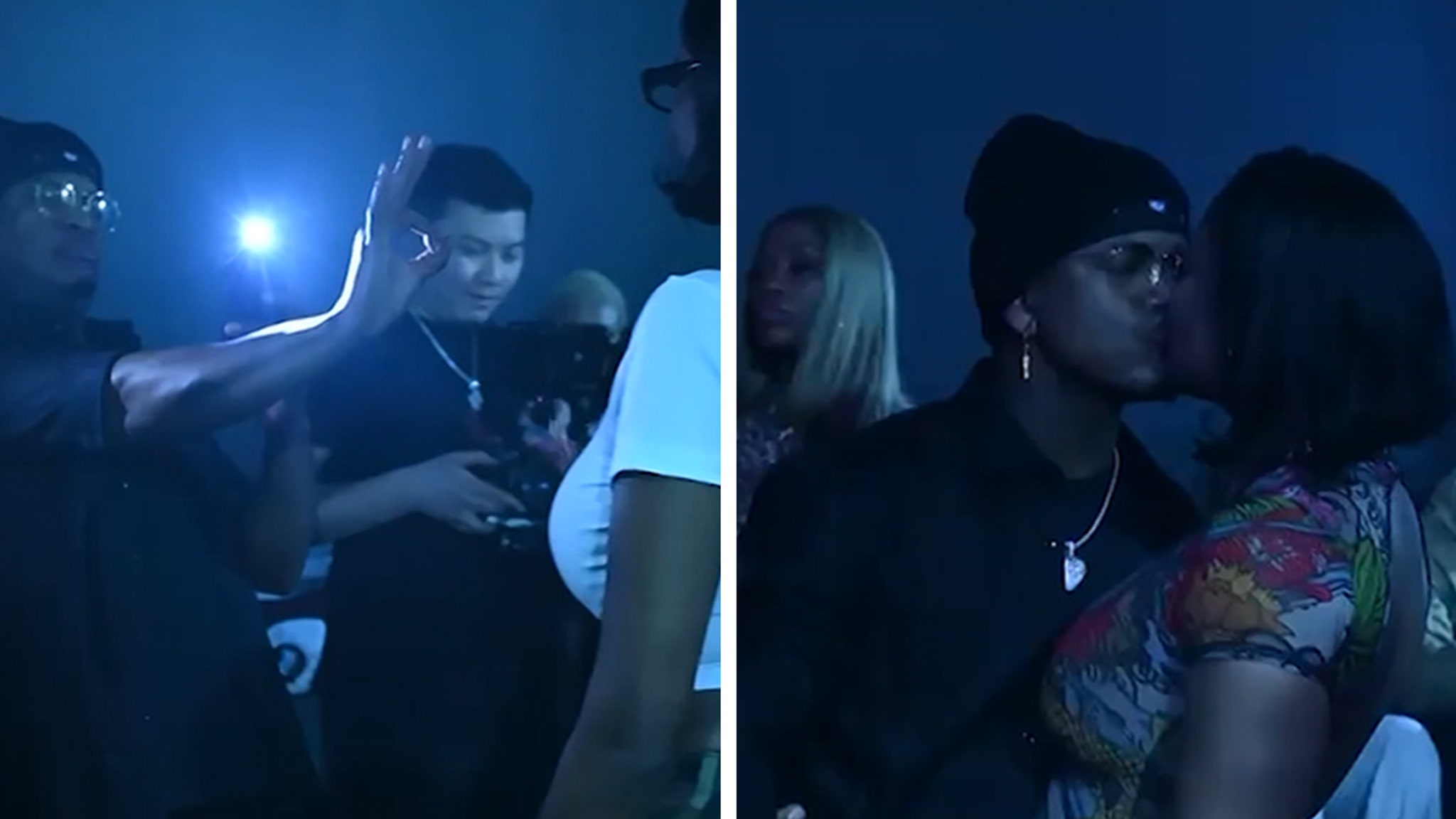Culture
Why Everyone Is Still Talking About ‘Paddington 2’

“Paddington 2 is the greatest film ever made,” one user posted on X in 2022.
This tweet was not ironic.
In the seven years since its release in January 2018, the film about a marmalade-loving bear’s quest to find the perfect gift for his beloved aunt has become an internet phenomenon, spawning memes, think pieces and an endorsement from Nicolas Cage. For a time, it was the best-reviewed film ever on the aggregator site Rotten Tomatoes.
“A very eclectic group of people respond to it in the way that they do,” David Heyman, a producer on “Paddington 2” and its 2015 predecessor, “Paddington,” said in a recent phone conversation from his home in London. The Mexican filmmaker Guillermo del Toro, for example, confessed to Heyman he was a fan.
Now with the third feature-length installment in the franchise, “Paddington in Peru,” in theaters — and already having passed the $100 million milestone at the international box office — it is hard to imagine that when “Paddington 2” first arrived in theaters stateside, it was only a modest box office success. Since its DVD and streaming releases, a devoted community of online fans has sprung up around it, evangelizing about the outsider bear who brought joy to their lives.
“There’s humor in it for adults; there’s humor for children,” said Heyman, who grew up reading the Paddington books, written by the British author Michael Bond. “It never feels patronizing or like it’s talking down to its audience. It has a big, beating heart.”
All three films are based on the children’s books about the duffle-coated, hard-staring bear, first published in 1958. In the first movie, Paddington emigrates from Peru to London in a story inspired by the World War II rescue operation that brought nearly 10,000 children from Nazi-occupied Europe to England. The second film, directed by Paul King, who wrote the script with Simon Farnaby, is an action adventure with stunning set sequences, following Paddington through a court trial, a prison escape and a daring pursuit by train.
Securing the return of the original film’s cast members — the gentle-voiced Ben Whishaw as Paddington, Hugh Bonneville as the hapless but well-meaning Mr. Brown and Sally Hawkins as the openhearted Mrs. Brown — was easy, Heyman said. And bringing in a dream team of new ones — Hugh Grant as the ridiculously campy villain, Phoenix Buchanan — was also a breeze.
“Hugh knows a good part,” he said, laughing.
King’s confidence as a director grew from the first film to the second, Heyman said, as he became more comfortable with the bevy of visual effects required to create the C.G.I. bear, who was represented during filming by a toy bear head on a stick.
“There was a lot more time to focus on the script and on working with the actors,” Heyman said. “It was really fun. The spirit of the film was reflected on set.”
That was maybe most evident in the rollicking Busby Berkeley-style dance number that unspools inside the prison as the end credits begin to roll. Locked up for 10 years for his scheme to frame Paddington for stealing a pop-up book, Phoenix, a former actor, finally gets his star turn. He leads the roughly 300 other prisoners in a tap number set to “Rain on the Roof” from Stephen Sondheim’s musical “Follies.”
“Hugh was all in,” said the choreographer Craig Revel Horwood, who created the 90-second number, which was shot in sections over 19 hours the day before the set was to be demolished. He recruited 300 of his tattooed, heavyset professional dancer friends to make up the corps.
“Anyone that looked rough, we were putting in,” said Horwood, who spent about a month planning the number, including three weeks teaching Grant to tap dance. “I had no problem getting anyone for the gig. Not one person turned me down.”
He outfitted the scruffy-looking extras with pastel umbrellas and size XXL bedazzled pink-striped uniforms — “when I saw everyone in costume, I was killing myself laughing,” he said — then shot from sunup to sundown, squeezing in the last few takes as a midnight deadline approached.
“It’s sort of a Momma Rose in ‘Gypsy’ moment,” he said. “Everything’s Coming Up Roses,’ that type of number.”
The same could not be said for the film’s initial U.S. box office receipts. Though “Paddington 2” had been a big success in Britain, it struggled to separate itself from the pack over a Martin Luther King Jr. holiday weekend, grossing a modest $15 million on a $40 million budget, according to the data site Box Office Mojo.
One challenge, Heyman explained, was that the Weinstein Company, which initially held partial North American distribution rights for the film, was in a fiscal crisis exacerbated by the numerous sexual assault allegations leveled against Harvey Weinstein, its co-founder and former co-chairman. On the verge of filing for bankruptcy, the company did not sell the rights to Warner Bros. until less than two months before the film’s release date.
“So Warners had one hand tied behind their back in terms of marketing,” Heyman said.
Eventually, strong reviews, including from this newspaper, and word-of-mouth praise helped the film in the United States, but it never attained the success that it had in Britain, where it would go on to become the sixth-highest-grossing film of 2017, according to Box Office Mojo.
That is, until “Paddington 2” became available to watch on Amazon Prime Video in March 2018 and then became a streaming hit in 2020 during the coronavirus pandemic.
“The film shows what can be if people have more empathy towards one another,” said Jason Chou, 28, a Los-Angeles-based visual effects artist.
But not everyone saw a generous spirit in King and Farnaby’s version of the classic bear.
One odd footnote to the reputation of “Paddington 2” appeared in a blog a few years after the film came out. The movie had a solid perfect score on Rotten Tomatoes. Suddenly, in 2021, it dropped to 99 percent after a freelance film critic wrote on his blog that he had given “Paddington 2” a negative review on BBC Radio in 2017 (no one has been able to find that review).
The blogger, Eddie Harrison, wrote that he had grown up reading the Bond books, and that in “Paddington 2,” the bear’s “charm is entirely missing,” and he has “evil, beady eyes and ratty fur.”
“This is not my Paddington Bear,” he added, “but a sinister, malevolent imposter who should be shot into space, or nuked from space at the first opportunity.”
Within twelve hours of his blog post in May 2021, he became Public Enemy No. 1 for the Paddington hive. And hours after the score dropped, The Hollywood Reporter published an article about the downgrade, with dozens of news outlets following.
Why did Harrison bother?
“I recognised that a revised critique would knock Paddington off a perfect RT score,” Harrison wrote on his blog, the Film Authority, in an account of the fallout. But he hadn’t, he noted, anticipated the intensity of the vitriol, which, he said, included doxxing and vandalism, as well as death threats.
“It’s just an opinion, man,” said Harrison, who labeled “Paddington in Peru” “passable but rather ordinary.”
Heyman certainly maintains a different take on “Paddington 2,” one shared across the internet, even as the third film, which follows the bear back to Peru, has garnered lukewarm reviews.
“The second one is about looking for the good in people,” Heyman said, “because if people find it, then they’ll be able to find it in themselves.
“In a time of life with cynicism, Paddington is a remarkably generous-spirited, uncynical character,” he added. “And the film reflects that.”




























